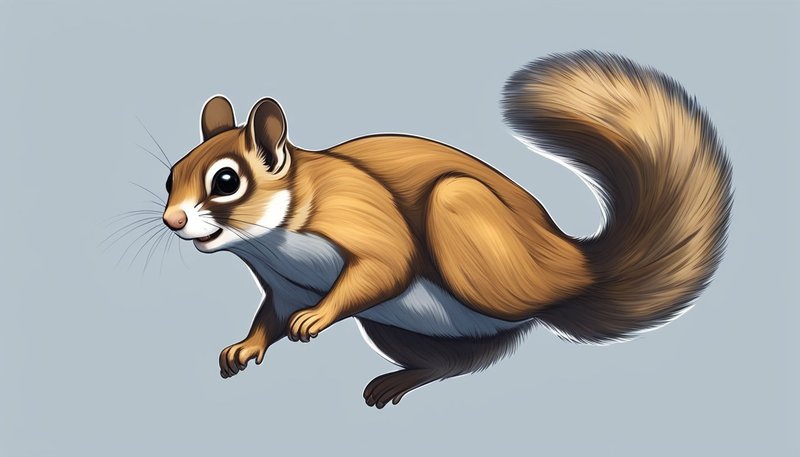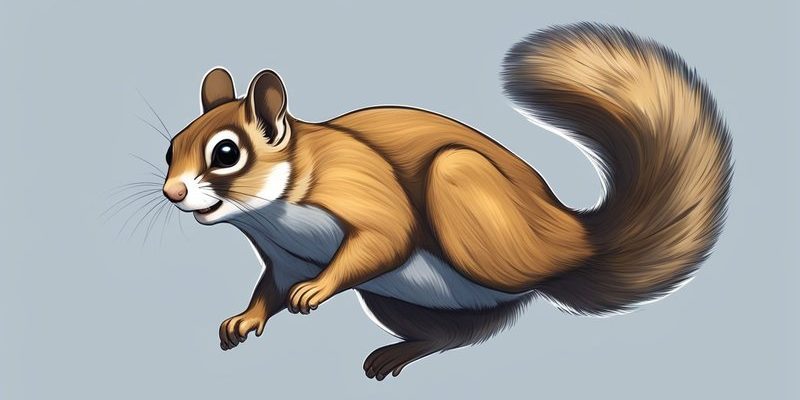
When you think about how they get their food, you might picture them soaring through the air like superheroes. In reality, the diet and hunting strategies of flying squirrels are all about adaptation and skill. They primarily feast on a variety of foods that keep them nimble and strong for their nightly adventures. Let’s dive into the world of flying squirrels and explore what they eat and how they hunt.
What Do Flying Squirrels Eat?
Flying squirrels have a varied diet that reflects their adaptability and resourcefulness. You might think they only munch on nuts and seeds, but there’s much more to their culinary repertoire. Here’s a rundown of their main food sources:
- Nuts and Seeds: Acorns, walnuts, and hazelnuts are favorites.
- Fruits: They have a sweet tooth for fruits like berries and apples.
- Fungi: Some species enjoy munching on mushrooms, which offers additional nutrients.
- Insects: They occasionally snack on insects or larvae for protein.
This omnivorous diet allows flying squirrels to adapt to different habitats, whether it’s a dense forest or suburban backyard. Honestly, their ability to switch up their food sources helps them survive through different seasons when food availability changes. For example, during winter, they might rely more on nuts stored from summer foraging.
How Do Flying Squirrels Forage?
Foraging is an essential skill for flying squirrels. Since they’re nocturnal creatures, they’ve developed specific strategies to find food under the cover of darkness. Here’s how they do it:
- Grooming Their Environment: Flying squirrels are keen observers. They’ll often check the ground under trees for fallen fruits or nuts.
- Using Their Senses: Their excellent night vision and sense of smell help them locate food that’s hidden in the foliage.
- Social Foraging: Sometimes, they’ll forage in groups. This way, they can alert each other to food sources or potential predators.
You might be wondering how they avoid predators while foraging. It’s all about stealth. Flying squirrels are quiet and quick, often gliding silently through the trees. They use their keen senses to stay aware of their surroundings, which minimizes the chances of getting caught.
The Art of Gliding
One of the most remarkable features of flying squirrels is their ability to glide. This skill isn’t just for show; it plays a crucial role in their hunting and foraging strategies. Let me explain how it works.
Flying squirrels have a special membrane called the patagium that stretches between their limbs. When they jump off a branch, they can spread this membrane to catch the air, allowing them to glide gracefully from tree to tree. This method helps them cover large distances quickly in search of food while evading predators.
Their gliding ability is not just about speed; it’s about precision too. They can maneuver around obstacles and land softly, which is essential for both foraging and escaping danger. Imagine gliding through the air like a feather, making sharp turns and landing silently on a branch—this is the daily adventure of a flying squirrel!
Seasonal Dietary Changes
Flying squirrels are masters at adapting their diet with the changing seasons. In spring and summer, their food options are plentiful. This is when you’ll see them munching on fresh fruits and tasty insects. As fall approaches, they start to stash away nuts for winter, demonstrating their foresight.
In winter, when food becomes scarce, flying squirrels rely heavily on their stores. They might dig through the snow to find hidden treasures or search for tree bark filled with fungi. These seasonal changes in diet help them survive harsh weather conditions and lower food availability, showcasing their adaptability.
You might relate this to your own pantry strategy. Just like you might stock up on canned goods before winter, flying squirrels prepare well in advance, ensuring they have enough resources to get through tough times.
Hunting Techniques of Flying Squirrels
While flying squirrels are primarily foragers, they can also showcase some hunting techniques. As opportunistic feeders, they’ll take advantage of insects or larvae if they encounter them. Here’s how they go about it:
- Spotting Prey: Their sharp eyesight allows them to notice movement, which is essential for spotting insects hidden in foliage.
- Quick Movements: When they spot a potential snack, flying squirrels can dart or glide quickly to catch it.
- Patience: Sometimes, they’ll wait quietly for prey to come within reach before making their move.
These techniques reflect their adaptability. Many may think of flying squirrels as just cute tree-dwellers, but their hunting strategies highlight their survival instincts.
The Importance of Habitat
The habitats that flying squirrels choose play a significant role in their foraging and hunting success. They prefer wooded areas, which provide ample opportunities for food and shelter. Here’s why these environments are so vital:
- Abundant Food Sources: Forests are full of nuts, fruits, and insects, which cater to their diverse diet.
- Safe Gliding Spaces: Trees allow them to glide efficiently from branch to branch, reducing the risk of predators.
- Communal Living: Squirrels often share their habitat with others, providing opportunities for social foraging and safety in numbers.
When flying squirrels lose their habitat due to deforestation or urban development, their survival becomes at risk. It’s a reminder of the importance of preserving natural environments for these charming creatures.
Wrapping Up the Adventure
In wrapping up our exploration into the diet and hunting strategies of flying squirrels, it’s clear that these animals are much more than meets the eye. From their remarkable gliding abilities to their adaptable diets, flying squirrels showcase creativity and resourcefulness. They illustrate how even the smallest creatures can have a significant impact on their ecosystem, all while being incredibly charming.
So, the next time you find yourself strolling through a forest at night, keep an eye out for these fluffy gliders. You never know when you might catch a glimpse of them soaring gracefully through the trees, hunting for their next meal or feasting on a hidden stash of nuts. They truly remind us of the magic of wildlife and the intricate dance of life in our natural world.

